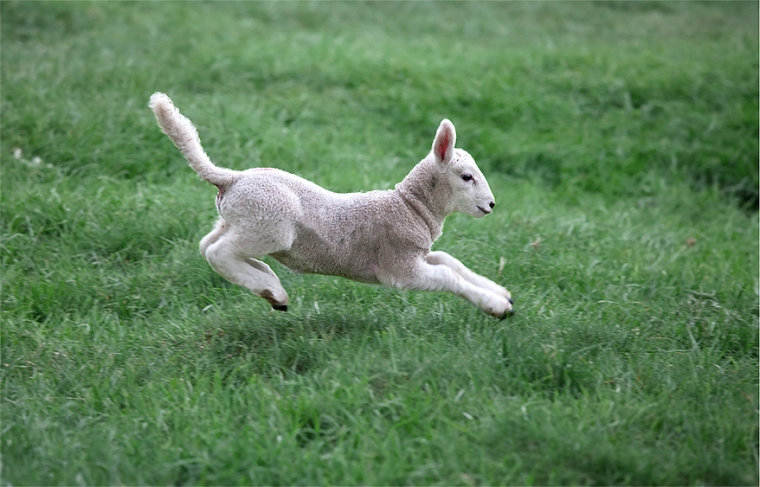
By Susan Harris*
Panicked propaganda that carbon forestry is taking over productive farm land and destroying the beef and sheep sector continues at pace in various media outlets, especially on social media. Sheep, apparently, are in special danger from aggressive pine trees grown for carbon credits.
Fortunately we have the latest Orme & Associates 2025 update of its report to Beef and Lamb New Zealand: "Land-use change from pastoral farming to large-scale forestry Update May 2025". The report should be of comfort to insecure sheep. Its summary shows that conversions of pastoral land to carbon forestry from 2022-2024 have actually reduced 78%.

Table 2 of Orme's report 2025
The recent propaganda again misreporting Orme's findings misleads the public and politicians by implying that carbon forestry has taken 300,000 hectares of farmland out of production over the past eight years. However, Orme's 2025 report shows us that for the full calendar years 2017-2024, commercial forestry conversions (28.1%) and forestry conversions for overseas buyers (40.5%) dominate the statistics. Honey production is 6.5% and carbon forestry 24.9%.

Adapted from Orme's report 2025
This proves that anxiety about farm conversions should be directed to the Government's policy settings for the Overseas Investment Office, not to the domestic commercial and carbon forestry sector.
The carbon forestry 2022 Q2 (pro-rata Q3 and Q4 as for Q1 and Q2) figures from Orme's 2022 report came to around 13,124 ha/year, very close to MPI’s registered Post-1989 forest 14,000 ha/year at that time. The Orme's 2025 report updates that figure to 9,308 ha/year (using full years 2017-2024), a 71% reduction over eight years.
However, this conversion rate is well below the replacement rate of about 40,000 ha per year of new carbon forestry needed to replace averaging pine forests that will exit the NZETS after their 16th year. Without replacements, carbon credit supply to the NZETS will drop precipitously in about 8-10 years time (Blog article: NZ's carbon debt going up $3 million per day), possibly sooner (MPI Forestry won't tell).
If carbon forestry expansion continues at 9,308 hectares per year, it will occupy all 13.1 million hectares of New Zealand farms in about 1,407 years (Stats NZ 2025). Obviously such a prospect is completely absurd.
Sheep numbers in New Zealand were reducing long before carbon forestry came along in 2008.

Source: FigureNZ 2025
The removal of government subsidies in the 1980's started the downward trend, exacerbated by reduced access to European markets (now open in trade deals provided New Zealand keeps to its climate commitments), and the industry failing to respond effectively to challenges presented by the new synthetic fibre industry.
It remains completely inane to proclaim that carbon forestry is taking over good farming country, threatening sheep, emptying schools, and significantly reducing food production. Rather, tightening carbon forestry rules without considering future carbon credit supply as averaging forests go off-line may create a crisis of credit supply to the NZETS, especially if the Government needs domestic credits to cover the 84 million tonne emissions gap it has for its Paris Climate Agreement 2030 target.
So don't panic! The sheep are safe! In fact, finally the industry has realized that we are no longer selling greasy wool to a war-torn UK, and is transiting to prestige wealthy markets which highly value truly natural products. "Sheep futures" are in promoting high end luxury wool items like the Nordic Socks I just bought at great expense. Long may the production of these beautiful natural products continue whilst carbon forest on the really tough country prevents erosion and generates clean water and carbon credit income. Sheep and beef meat returns are up because meat sellers have positioned themselves well in the international markets.
There are also solar energy income options for farmers where sheep may safely graze underneath solar panels. Wise planning, not misplaced hysteria, creates plenty of room for multiple income streams on farm. This is the 21st Century after all.
Farmers Weekly 20 June 2024
*Susan Harris is Principal Scientist at GreenXperts Limited, a New Zealand-based sustainability consultancy involved in numerous carbon and land management projects. Susan was on the science team that helped the New Zealand Government create the New Zealand Emissions Trading Scheme. Susan worked on emission factors with other colleagues at that time.
12 Comments
Be all that as it may, NZ’s sheep flock and associated lamb and mutton kill, since the admittedly excessive 1980s numbers, has more than halved and continues to decrease annually. That more than anything else is market driven and that in turn evidences that the production and processing costs are not exactly recoverable. The parlous state of the finances of two biggest processors, Alliance & SFF is due testament.
Agree Fox, economics speak for themselves. The alarmists amongst the Feds etc are just emotionally attached to a pastural past that in many instances never functioned very well in any economic sense. Not to mention the environmental damage caused by clearing unstable land.
I grew up near Waipukurau, things worked when wool had value
Well HB to follow on from your accurate comment the other day and while on the topic of stock pasture versus trees , perhaps some parts at least of those high country sheep stations , that are no longer running the numbers of yesterday, would in fact lend themselves to timber, spruce, cedars etc that are known to be sustainable in mountainous regions.
Yeah 100% Fox, in fact all that's required is to spray out the undesirable species and plant ,like you mention, desirable species. I am a fan of douglas fir for inland Sth Island. They are a very long lived tree and quality wood. Doing that would save millions in weed control, because trees aren't the problem it is broom, gorse etc that is the problem.
Allowing good trees to spread would overtake the likes of Lodge pole pine and others. Spending millions to try and prevent a natural process of revegetation is ludicrous.
Imagine in 100 years the timber resources.
But 1952 was a great year.
That's right redcows, and I would think many old sheep farmers hope that year might return.
Doubt it. It is all about meat now. And many pundits are saying we need $200 per lamb to stay viable.
Another puff piece from the carbon industry while interest.co.nz ignores recent carbon sink research. Susan has the gall to tell farmers to not panic when her whole industry is based on panic and stoking fear.
Niwa just found an additional annual carbon sink of 53 million tonnes - I guess that is not newsworthy when there is carbon trading lucre to peddle and fat, fear incited, insurance margins to be had.
"We present results from a decade-long (2011-2020) national inverse modelling study for New Zealand, which suggests a persistent carbon sink in New Zealand’s terrestrial biosphere (-171 ± 29 million tonnes CO2 yr−1). This sink is larger than expected from either New Zealand’s Greenhouse Gas Inventory (-24 million tonnes CO2 yr−1) or prior terrestrial biosphere model estimates (-118 ± 22 million CO2 yr−1, Biome-BGCMuSo and CenW).
...Regions 14 (Lauder) and 15 (Otago and Southland region) are also dominated by grassland
(mostly sheep and beef pasture) but showed a relatively large sink.
...Top-down sink estimates of regions with predominantly grazed grassland were as high as -1.3 kg CO2 m2 y-1 using Southland as an example."
https://egusphere.copernicus.org/preprints/2025/egusphere-2024-3866/egu…
I don’t think this is about carbon - it’s about the decline of sheep and what’s to “blame”.
If sheep profitability dosnt improve I think 1 of 3 things will happen.
1. We will see more farm amalgamation to bigger more corporate farms - has been happening for years.
2. Other land uses will take it over - trees, beef?, dairy etc etc - Dairy has taken most of the best sheep land.
3. land will be abandoned - not the first time in NZ or around the world - quiet rewilding of lots of land and is happening worldwide
1-3 would happen in a free market. That market is skewed by government dekat doubling the price of land. How does a sheep and beef farmer buy the neighbour to increase economy of scale if he was to pay double - for a government whim to change the climate in a carbon negative country. If it isn't carbon that has doubled the price of land what is it? Does doubling the price of land affect profitability of farming and restrict young farmers entering the industry?
The problem is even farmers who have been doing it for years with land already bought years ago cant make a dollar. The biggest fall in sheep numbers coincided with a huge fall in forest area.
With new controls land prices should fall a lot, Government buying wool carpets - happy days ahead for the sheep farmers - what could go wrong?


We welcome your comments below. If you are not already registered, please register to comment.
Remember we welcome robust, respectful and insightful debate. We don't welcome abusive or defamatory comments and will de-register those repeatedly making such comments. Our current comment policy is here.